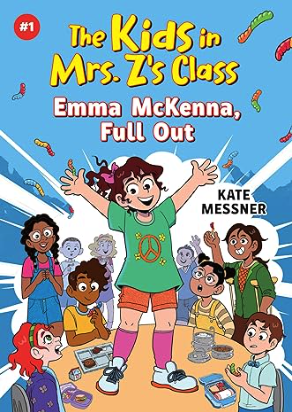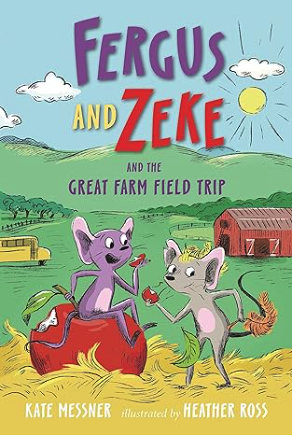Welcome to Teachers Write 2022!
Good morning, friends, and welcome to Teachers Write!
There’s no question about it – 2021-22 was another school year that brought unprecedented stresses and challenges for teachers and librarians. Sometimes, in the midst of that, it’s easy to forget the joy of teaching and learning – and the joy of playing with words. So that’s what we’re going to do this summer.
Play. Experiment. And explore.
We’ll look at a variety of mentor texts from your kids’ favorite authors as jumping off points to play around with memory mining, character, setting, structure, and more. And each week, you’ll have a chance to check in with educator, writer, and long-time Teachers Write camper Jen Vincent, who hosts check-ins on her blog, Teach Mentor Texts each Friday.
But before we get started with your first-week content, a quick introduction for folks who have found their way here through friends and may be new to Teachers Write….

I’m your host, Kate Messner – a former middle school teacher and forever educator, as well as an award-winning & New York Times bestselling author.I’ve published more than fifty books for young readers, from picture books to easy readers and chapter books, as well as novels and nonfiction for middle grade readers. You can check out my Books page for a full list of my titles, in case your library or classroom library is missing any of them.
Now a bit more about Teachers Write…
This is a free, online summer writing camp, especially for teachers and librarians. It’s meant to be a fun, low-pressure way to grow as writers because the truth is, to be truly effective teachers of writing, we need to walk the walk. That means feeling the discomfort of stepping out of our comfort zone, trying new things. And it means practicing, with all different kinds of writing.
We’re going to start with a simple writing prompt — one that I hope you’ll explore in a few different ways on a few different days this week.
Write about a ritual that was part of your childhood, or one that you observe now. I’m not talking about religious rituals, though you’re welcome to write about those, too. I’m talking about the small things we do in our everyday lives, or as part of a holiday or special event.
Here’s an example… When I’m cutting up a cucumber, before I compost the ends, I rub them on that newly-cut part of the cucumber for a second. It’s something I always saw my mother doing when I was growing up, and when I asked why, she said it was “to draw the bitterness out.”
I was seven, maybe eight years old at the time, and that didn’t make sense to me. “What? How does that draw the bitterness out?” I asked.
“It doesn’t,” she said. “But my mother always said it did, so I do, too, as a tiny way to remember her.”
I liked that. The notion that we can quietly keep a small tradition that makes no sense, except to connect us to someone we love. So even though it doesn’t change the way they taste, I do the same thing whenever I cut up cucumbers for salad.
When my kids were growing up, we ate marshmallows whenever there was a thunderstorm – our no-fuss, improvised version of Patricia Polacco’s Thunder Cake. We got ice cream sundaes on the first and last days of school.
Maybe you have rituals like that, too. Maybe you have a ritual to start or end your day, or one to begin each new school year. Or maybe you have a quiet tradition that connects you to someone who is gone.
Here are your writing assignments for this week:
1. What are the rituals that are (or were) part of your life? Choose one to write about – just a paragraph or two is good to start.
2. On another day this week, return to that description you wrote, and take some time to write more about the place where that ritual occurs. (Remembering my mom’s cucumber-cutting ritual takes me back to my childhood kitchen – there were gauzy light orange curtains and a door that led to the mud room, which always smelled like our dog, Dolph.)
If you’re writing about a ritual you observe now, perhaps you can go to that place and pay attention, writing what you observe, what you hear and smell when you slow down and pay attention. If you’re dealing with a memory, close your eyes and try to place yourself in that location. What do you hear? What are the smells? What’s obvious? And what’s lingering beneath the surface? Spend about 15 minutes writing about that place.
3. A little later in the week, see if you can craft your ritual memory into a poem. Don’t stress out about this. It doesn’t have to rhyme; in fact, don’t rhyme. Too often, that makes language feel awkward and forced (I may have added this rule for selfish reasons…have you ever tried to rhyme with cucumber?) But if you’d like, you can adopt a form with some rules to serve as a bit of scaffolding if that makes the writing seem more manageable.
Nikki Grimes’s wonderful novels in verse, GARVEY’S CHOICE and the forthcoming GARVEY IN THE DARK, are written entirely using the Japanese tanka form.


Maybe you’d like to try that, too? Or perhaps you’d rather write in free verse?
Whatever you decide, play around with it. Experiment with the words as you use language to paint a picture of this ritual and the role it plays in your life.
And here’s a side project for folks who might be working on novels: Do this same set of writing activities, but write from the point of view of your character. Exploring ritual – and the connections they serve to create and sustain – can be a powerful way to illuminate character.
Next week, we’ll do some writing that focuses on the power of place in our lives.
Finally today – a bonus brainstorming prompt from award-winning author Martha Brockenbrough, whose easy reader FRANK AND THE BAD SURPRISE is a great one to share with kids when you’re working on letters!


My favorite brainstorming strategy is to put two different and unrelated favorite things together. So, puppies and cake, for example. Between the two of them, I can very often find a story.
The obvious one here is a puppy wants some cake. But what if (and this is my next strategy), you subvert the relationship somehow? What if the cake wants to taste the puppy? Or what if the cake does NOT want to get eaten and tries to persuade the puppy to look elsewhere?
With the unexpected pairing + the subversion/inversion, you start to get to what feels like new ground. Interestingly, this is also a way of discovering our hidden biases–when you are purposely changing an element, you discover the way your biases inform your expectations of what is supposed to happen.
All right – you have your marching orders for this week! Or…let’s say marching suggestions, shall we? Remember that this is low-stress creativity booster, so feel free to participate as much or as little as you’d like! And don’t forget to check in with Jen on Friday if you’d like to connect with other campers.
For now, though…
Write. Play. Explore. Relax.
And look for your second Teachers Write email next week!
All best,
Kate
One more quick note… Teachers Write has always been, and will always be, free, but I do have a favor to ask. If you’re taking part this summer and you’re able to, please order some of my books from your local bookstore – or you can order signed copies from mine, The Bookstore Plus in Lake Placid, NY. Thanks!




